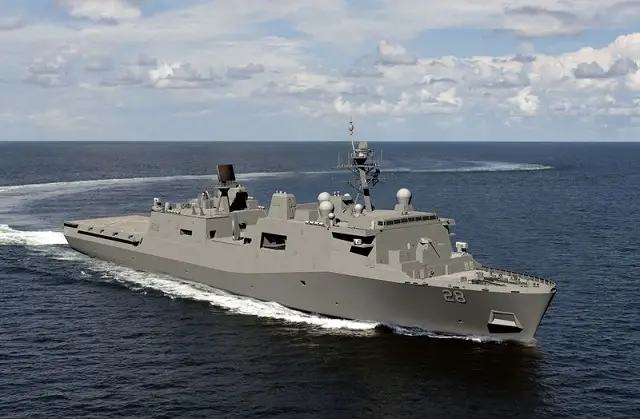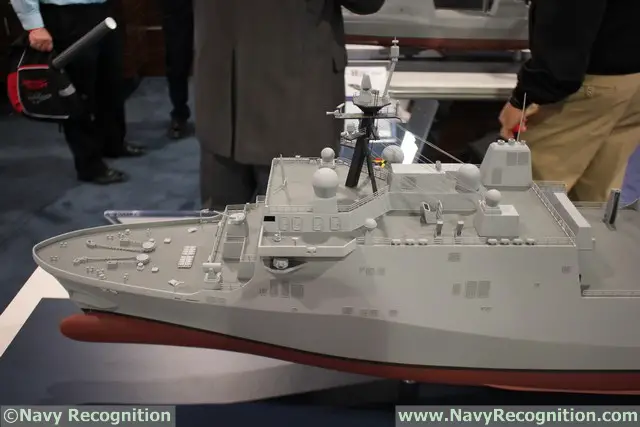Breaking news
HII Authenticates Keel Of Amphibious Transport Ship Fort Lauderdale - LPD 28.
| 2017
|
|
|||
| a | |||
|
Naval Industry News - USA
|
|||
|
|
|||
|
HII Authenticates Keel Of Amphibious Transport Ship Fort Lauderdale - LPD 28
|
|||
|
The keel for the future USS Fort Lauderdale (LPD 28) was authenticated during a ceremony at Huntington Ingalls Industries (HII) on Oct. 13.
|
|||
|
|
|||
 HII's Ingalls Shipbuilding division was awarded a $1.46 billion, fixed-price incentive contract for the detail design and construction of the amphibious transport dock Fort Lauderdale (LPD 28). HII rendering HII's Ingalls Shipbuilding division was awarded a $1.46 billion, fixed-price incentive contract for the detail design and construction of the amphibious transport dock Fort Lauderdale (LPD 28). HII rendering |
|||
|
|
|||
|
Keel laying is the traditional start of ship construction. In the age of wooden ships, 'keel laying' referred to the laying down of the piece of timber serving as the backbone of the ship or keel. Although modern manufacturing techniques allow fabrication of portions of a ship to begin many months earlier, the joining together of modules is considered the formal beginning of a ship. The keel was authenticated to be "truly and fairly laid" by the ship's sponsor, Meredith Berger, former Deputy Chief of Staff to the Secretary of the Navy who previously served as a senior policy advisor within the Department of Defense, the Environmental Protection Agency, and the State of Florida.
"I'm very honored to have Ms. Berger here today to take part in this event," said Capt. Brian Metcalf, LPD 17 class program manager for Program Executive Office (PEO) Ships. "Authentication of the ship's keel is a major ship event and we're looking forward to leveraging the experience and expertise of the Ingalls Shipbuilding team to achieve future production milestones." The San Antonio class is a major part of the Navy’s 21st century amphibious assault force. The 684-foot-long, 105-foot-wide ships are used to embark and land Marines, their equipment and supplies ashore via air cushion or conventional landing craft and amphibious assault vehicles, augmented by helicopters or vertical takeoff and landing aircraft such as the MV-22 Osprey. The ships support a Marine Air Ground Task Force across the spectrum of operations, conducting amphibious and expeditionary missions of sea control and power projection to humanitarian assistance and disaster relief missions throughout the first half of the 21st century. The versatility of these ships also allow support of humanitarian efforts - USS New York (LPD 21), a sister ship, is currently underway from Mayport, Florida offering support in the wake of Hurricane Irma. |
|
|
|||
|
Video: Interview with the LPD 28/LX(R) program manager during Sea Air Space 2016
|
|||
|
|
|||
|
LPD 28 is named in honor of the Florida city and will be the first Navy vessel to bear the name and will be the Navy's twelfth San Antonio class amphibious transport dock ship. The future USS Fort Lauderdale is planned for delivery in 2021. Eleven LPD 17 ships have been delivered, the most recent being USS Portland (LPD 27) which delivered Sept. 18, 2017. HII is also procuring long lead time material and advance procurement in support of LPD 29.
Comments by Navy Recognition: LPD 28/LX(R) will replace the Navy’s Harpers Ferry- and Whidbey Island-class dock landing ships and will use the same hull as the San Antonio (LPD 17) class. Ingalls has delivered 10 of the LPD 17 ships to the Navy, is currently building the 11th, Portland (LPD 27). During the Sea Air Space 2016 exposition back in May, Steve Sloan (the program manager at HII) told us the main design features HII and the US Navy worked on to reduce the cost of LPD 28 compared to the San Antonio class on which it is based: - LPD 28 bow works is simplified - Forward: LPD 17 composite mast is replaced with a steel mast based on the DDG 51 mast design (AN/SPQ-9B radar on top) - Structures in the boat valley are removed - Aft: LPD 17 composite mast is replaced with a mast similar to the one found aboard LHA 6 and 7 (AN/SPS-48 radar on top) - Stern gate is open at the top |
|||
|
|
|||
 LPD 28 featuring optional 16x Mk41 VLS cells in line with the distributed lethality concept LPD 28 featuring optional 16x Mk41 VLS cells in line with the distributed lethality concept |
|||
|
|
|||
|
LPD 28 weapons fit is the same as LPD 17: 2x RIM-116 RAM launchers (21 missiles each) and 2x MK 46 (Bushmaster II) 30mm guns, fitted in the same location (at the stern and on top of the aviation hangar). The scale model at SNA also featured 2x SEWIP electronic warfare system (fitted on each side of the bridge) and 8x Nulka decoy launchers.
The scale model on display at Sea Air Space 2016 featured an important optional difference however: 16x Mk41 VLS cells. We were explained this optional feature is representative of how HII could answer possible future US Navy requirement in line with the distributed lethality concept. More details on LPD 28 design in our SNA 2016 article from January. |
|||


























